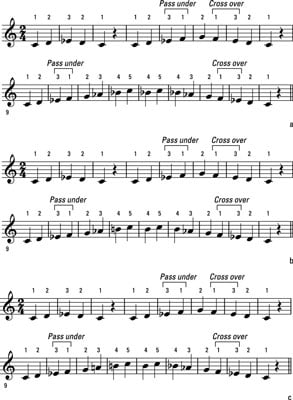

In fact, this scale is similar to ones used in the Middle East. In fact, it has the complicated name of an augmented second!įor our purposes, it’s important to know that this larger interval gives the harmonic minor scale an exotic character.

The interval between these two pitches is larger than a whole step. In addition, look at the A-flat to B-natural. Any chord based on either the 5th or 7th note of the harmonic minor scale will make use of this movement for a firmer resolution. Remember, the c natural minor scale had a whole step there.Ī half step at the top of the scale drives home to the tonic more powerfully than a whole step. This change means we now have a half step leading back to the tonic of C. Raise the B-flat by a half step, making it a B-natural instead: The c minor harmonic scale is similar to the natural version above. Now let’s look at the second type of minor scale, the c minor harmonic scale. But, don’t worry, with a little practice these things can become second-nature. It’s also challenging at first to play the two hands together. It takes a little time to learn which numbers go with which fingers.

The left hand is the opposite: 1 is your pinky, 4 is your ring finger, 3 is your middle finger, 2 your index finger, and 1 is your thumb. 2 your index finger, 3 your middle finger, 4 your ring finger, and 5 is your pinky. Use the following fingerings for each hand:įor your right hand, 1 is your thumb. If you know your C Major scale, playing c minor will be simple. It’s that small interval that gives the minor scale and its associated key its special, sad sound. Notice the half step between the second and third pitches, the D to E-flat. The notes of the c minor natural scale are:Įach pair of pitches is separated by the interval of either a whole step or half step: Or, you can play multiple octaves.įor now, let’s stick with only one octave. When playing any scale, you can play one octave (either ascending, descending, or both). The space, or interval, between each C is an octave. They come in groups of two’s and three’s, and the white key below each group of two black keys is always C. You can always find C on the keyboard by looking at the pattern of black keys. The C Minor Natural ScaleĪs noted above, the c minor scale begins on its tonic: C. In the next few sections, let’s take a look at each version individually.


 0 kommentar(er)
0 kommentar(er)
